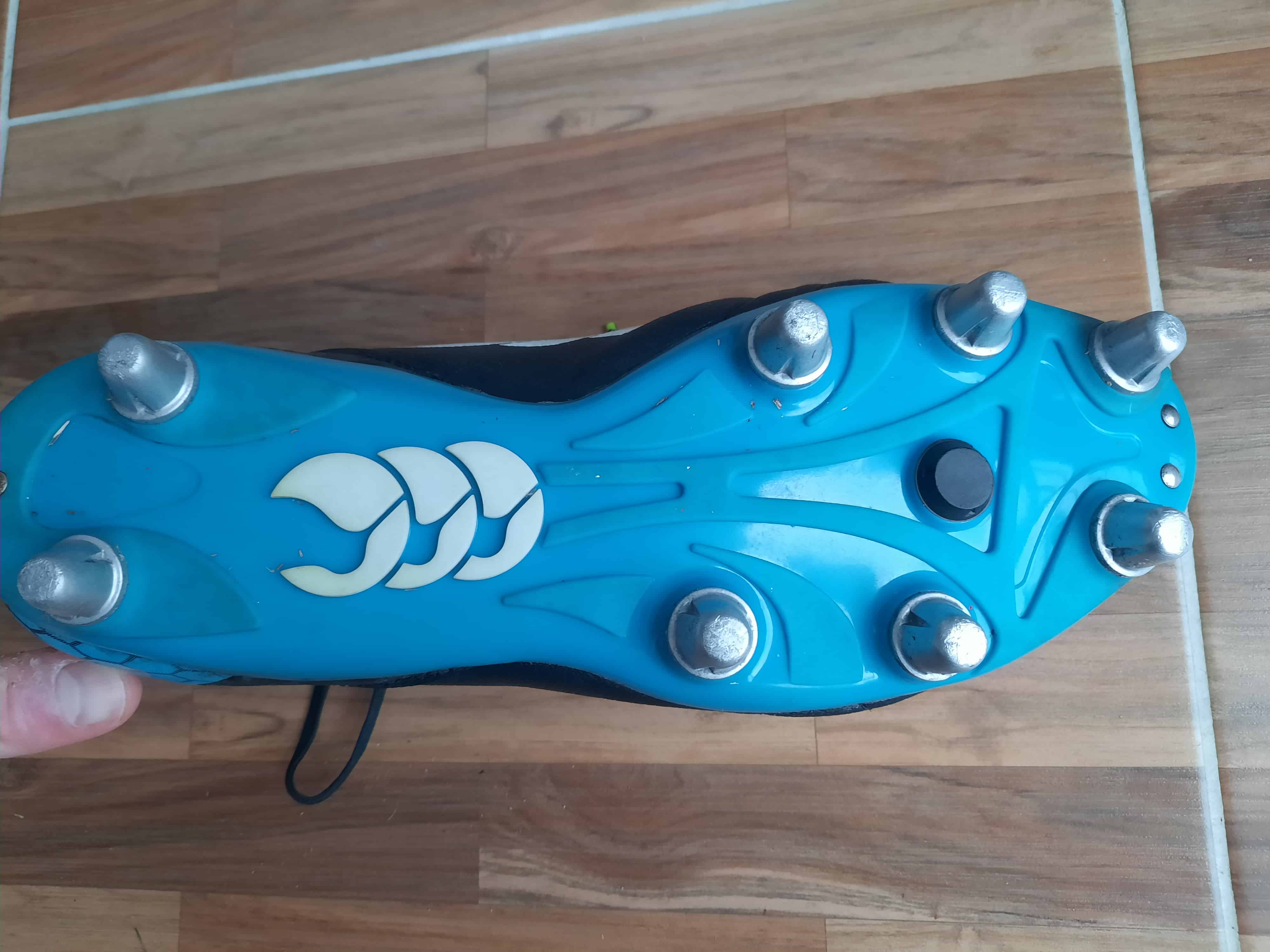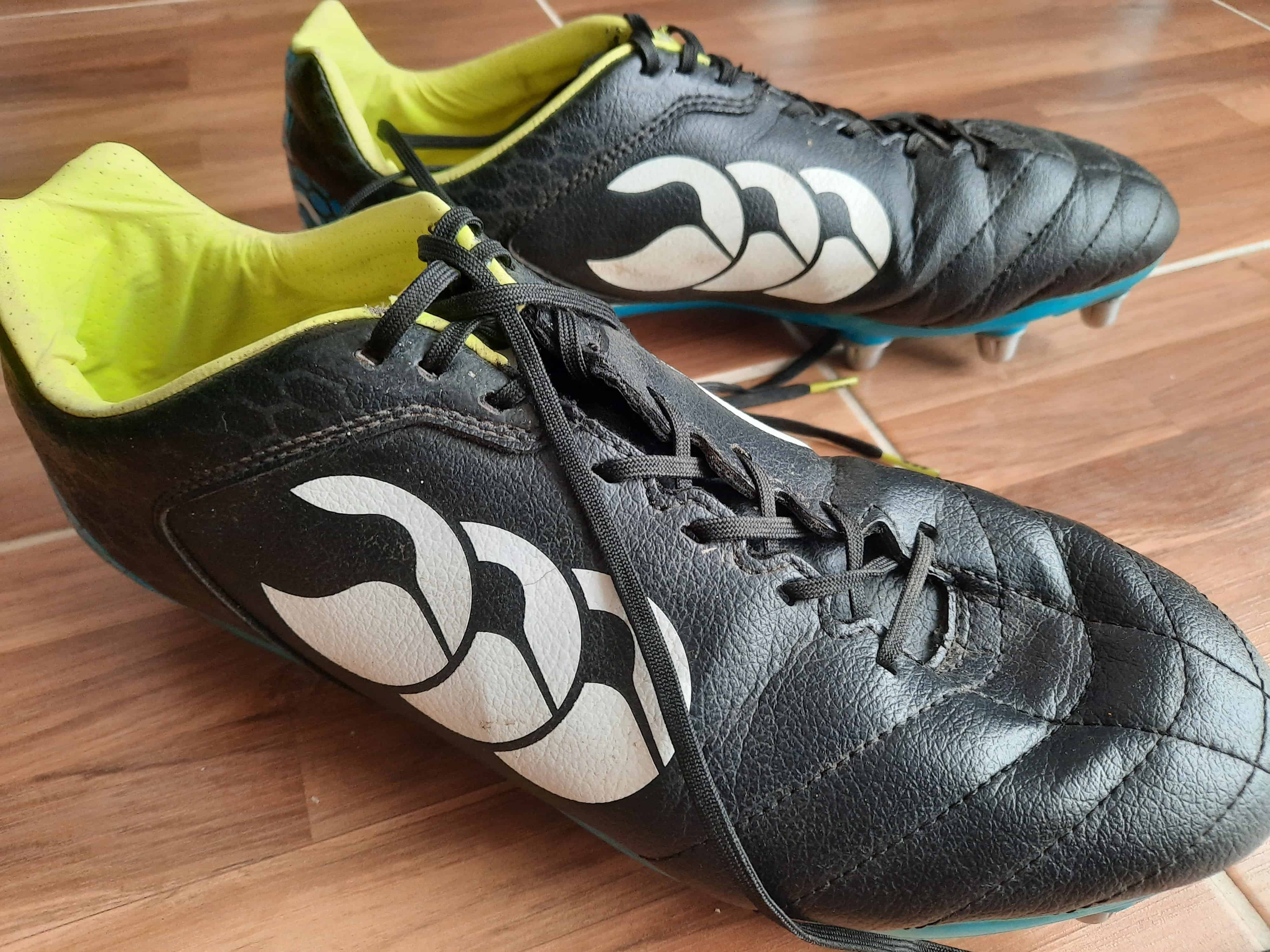Rugby players, people who share living space with rugby players, and parents of rugby players are all very familiar with the pungent smell of dirty rugby boots. However, once you know how, it is easy to clean rugby boots, keeping them in tip-top shape and ready for the next game or practice.
This is how you clean rugby boots
- Gather all the cleaning equipment
- Remove caked-on mud from rugby boots
- Remove and wash boot laces
- Clean the soleplate of rugby boots
- Clean the outside of rugby boots
- Clean the studs
- Remove grass stains and scuff marks
- Clean the inside of rugby boots
Cleaning rugby boots will keep them looking pristine and minimize the need to purchase new boots regularly.
Follow these ten easy steps to clean either synthetic or leather rugby boots.
1. Gather All The Cleaning Equipment
You will need the following to clean rugby boots properly:
– Stiff nylon brush
– Soft nylon brush
– Old toothbrush
– White toothpaste
– Mild detergent or shoe cleaner
– Clean cloth or towel
– A bowl of lukewarm water
– Leather balm if you have leather boots
2. Remove Cacked Mud From Rugby Boots
Playing in wet conditions will cause mud and debris to cake onto rugby boots. The easiest way to remove caked-on dirt is by knocking the boots together or using a stiff brush or stick to scrape the mud and debris.
Take care not to damage the boots by scraping or brushing too hard. Remove all the excess dirt and mud between the studs and the side of the boots.

You might like: How To Choose Rugby Boots
3. Remove And Wash Boot Laces
Remove and hand wash or machine wash the boot laces using a mild detergent. Place the shoelaces in a mesh bag when using a washing machine to prevent tangling. Hang the shoelaces out to dry.
4. Clean The Soleplate Of Rugby Boots
The soleplate is the hardest part of the boot and can be cleaned with a stiff nylon brush, mild detergent or shoe cleaner, and lukewarm water. Take care to clean in between the creases and studs, ridding the soleplate of mud and grime.
5. Clean The Outside Of Rugby Boots
Use the soft nylon brush or toothbrush to remove dirt from seams and small cervices.
Use a softer brush or toothbrush, lukewarm water, and mild detergent to clean the top of the boots without scrubbing too hard. Excessive scrubbing may damage the surface of the rugby boot.
6. Clean The Studs Of Rugby Boots
Use the stiff brush to brush away all dirt from the studs. Use the time to inspect the studs for wear or burrs and replace them if needed. Worn or burred studs will not offer proper grip and may cause unnecessary injuries to another player.
7. Remove Grass Stains And Scuff Marks From Rugby Boots
Remove the grass stains and scuff marks using toothpaste, a toothbrush, a paper towel, or a cloth. Add toothpaste to the toothbrush, cloth, or paper towel, and gently rub away the grass stains and scuff marks. Be careful, do not rub or brush too vigorously. Instead, use a damp cloth to clean off any residue.
8. Clean The Inside Of Rugby Boots
Use a soft brush, lukewarm water, and mild detergent or shoe cleaner to clean the inside of the boots. Next, use a clean cloth and wipe the inside of the boot, getting it as dry as possible.
9. Dry The Rugby Boots
It is crucial to completely dry rugby boots before using them. Never dry rugby boots with direct heat, such as a heater, warm fan, blow dryer, or tumble drier. Direct heat will damage rugby boots beyond repair.
Dry rugby boots by putting them in a warm area with good airflow, away from direct heat, including the fireplace. The rugby boots may take longer to dry this way, but it is by far the best way to preserve the boots. It may be wise to wear an extra set of boots while the pair you cleaned is drying.
Also read: How To Wear In Rugby Boots
10. Replace The Boot Laces
After the rugby boots have completely dried, it is time to replace the clean boot laces. Your rugby boots are now ready for the next practice or game.

Recommended reading: Rugby Boot Rules Made Simple!
Are Synthetic And Leather Rugby Boots Cleaned The Same Way?
Follow the same steps when cleaning synthetic or leather rugby boots with one exception.
When you own leather rugby boots, you may want to add leather cream to them after they have dried. Gently apply the leather cream to the boot and polish the boot with a soft brush.
The leather cream will feed the leather, keeping it soft and well-conditioned. Another advantage of applying leather cream is adding a waterproof layer, further protecting the leather.
Synthetic rugby boots do not need conditioners to stay in shape or be waterproof and look fine after cleaning.
Can You Wash Synthetic Boots In A Washing Machine?
If you wish, you are welcome to wash an all-synthetic rugby boot in a washing machine. Take care to use a low heat setting and take them out as soon as the washing cycle is completed.
Once again, do not be tempted to use direct heat to dry the rugby boots and under no circumstances use a tumble drier to dry them. It will ruin your rugby boots.
Also check out: Rugby Boots Vs Football Boots (Similarities and Differences)
Can You Clean Football Boots The Same Way As Rugby Boots?
Football and rugby boots are made from the same materials and can be cleaned similarly. Knitted football cleats can also be cleaned the same way but with more caution to prevent tearing or damage to the uppers.
How To Keep Rugby Boots From Smelling
Prevention is the only solution to keeping rugby boots from smelling. Do the following to prevent foul odor from emitting from your rugby boots.
- Only wear the rugby boots once they have dried completely.
- Sprinkle baking soda inside the boots, leave overnight and vacuum clean before use. The baking soda will eliminate any possible odor.
- Always wear clean, dry socks to practice and games.
- Clean and air the boots after every wear.
- Remove the boots from your kit bag and air them as soon as possible.
- Wash and dry your rugby boots properly after every practice and game.
- Wash your feet and treat any fungus that may cause boots to smell.
- Sweat and damp conditions will be a breeding place for bacteria. Bacteria growth causes boots to smell, so keep them clean and dry.
- Replace old boots timeously.
Conclusion
Replacing rugby boots is an expensive exercise. Save on unnecessary expenses by taking good care of your boots, and remember, hustle and heart set you apart. Enjoy the game!
Recommended reading: 19 Items Rugby Players Wear
Image Credits
Muldentaler2, CC BY-SA 4.0, via Wikimedia Commons
